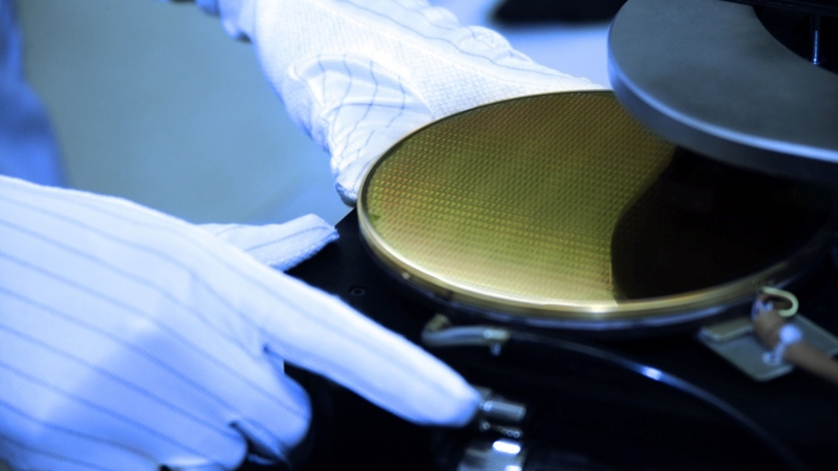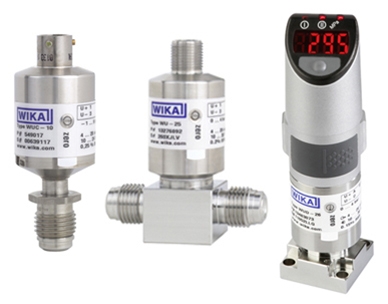
The production of semiconductors places high demands on pressure measurement technology. Pressure transducers there, for example, are deployed in a UHP “ultra high purity”) design. This article explores the question of why such high-quality instruments are necessary and what properties they must have.
During semiconductor production, the pressure transducers are exposed to highly aggressive, toxic or even pyrophoric gases, i.e. gases that are flammable at room temperature. This applies, for example, to “chemical vapour deposition” (CVD), in which layer material is deposited on a silicon substrate. In view of the sensitive process steps, the entire manufacturing process for the microscopic circuits of modern chips must be highly pure. In addition, there must be no danger from escaping gas.
For applications in the semiconductor industry, WIKA has developed the UHP pressure transducers of the WU series. With regard to the safety of people and the environment, as well as for smooth production, three criteria are critical for these sensors:

UHP pressure transducers of the WU series from WIKA meet the application criteria of semiconductor production.
Purity
During the production of UHP pressure transducers, the highest level of cleanliness is essential in order to exclude contamination. The transducers for semiconductor production are therefore manufactured in a clean room in accordance with ISO 5. This is followed by a double-cleaning process to remove production residues: first with distilled water and then with isopropanol. After drying, another rinse follows, this time with ultrapure gas. The instrument is then double-bagged: This “double bagging” enables the pressure transducers to be introduced cleanly into the customer’s clean room.
Leak tightness
The entire UHP product family has extremely low leakage rates. These are achieved through carefully controlled orbital welding processes. To prove this, all instruments undergo a helium leak test. Particular attention is paid to the connection between the UHP pressure transducers and the application, especially the sealing. Conventional polymer seals are out of the question because of the purity requirements. They would outgas and thus contaminate the process. The alternative consists of threaded connections with sealing lips between which a metal seal is placed. Such a sealing is made of a softer material than the threaded connection itself and thus adapts to the contour of the sealing lip. The process connection is thus secure.
Material
Due to the required purity in semiconductor production, the UHP pressure transducers must maintain a corresponding surface quality. This is achieved by using a particularly homogeneous and inclusion-free stainless steel. This material, known as “double melt”, obtains its high-quality properties through melting under vacuum. Electropolishing ensures a smooth, uniform surface of the wetted parts. For this purpose, the workpieces are placed in an electrolyte solution and connected as an anode. The electrochemical reaction to this process has a twofold effect: It leads to material removal, resulting in a surface with an average surface roughness of ≤ 13 µm. At the same time, an oxide layer is formed, which passivates the surface. The stainless steel parts thus exhibit increased corrosion and pitting resistance.
Note
Further information on our UHP pressure transducers can be found on the WIKA website. If you have any questions, your contact will gladly help you.

